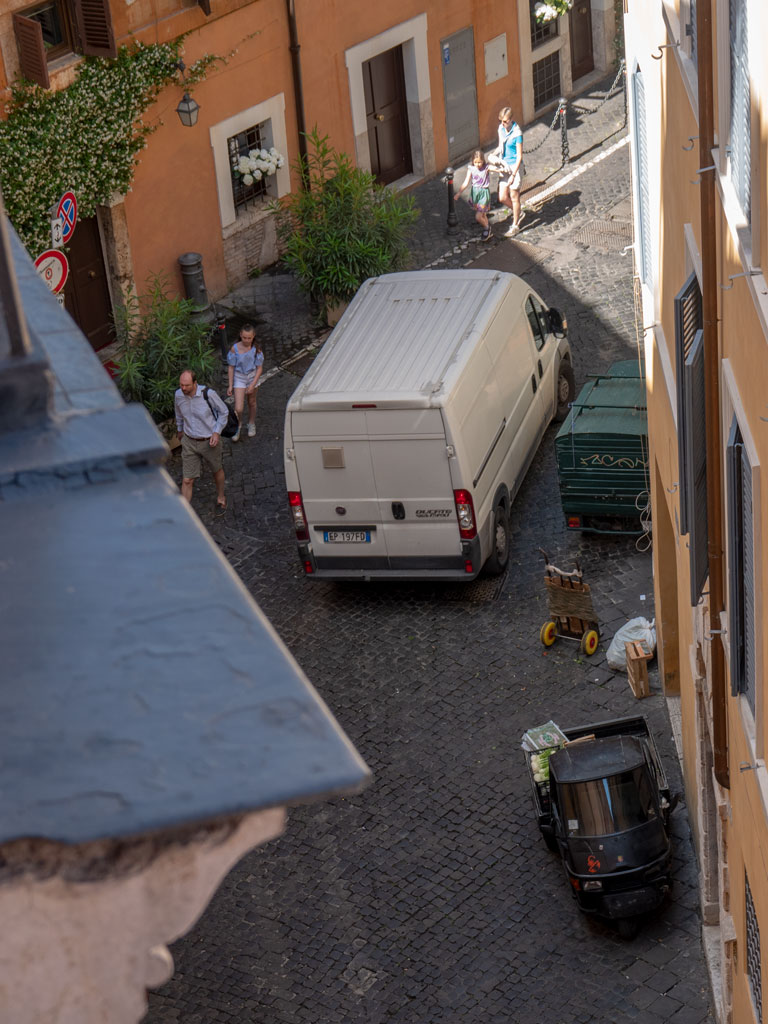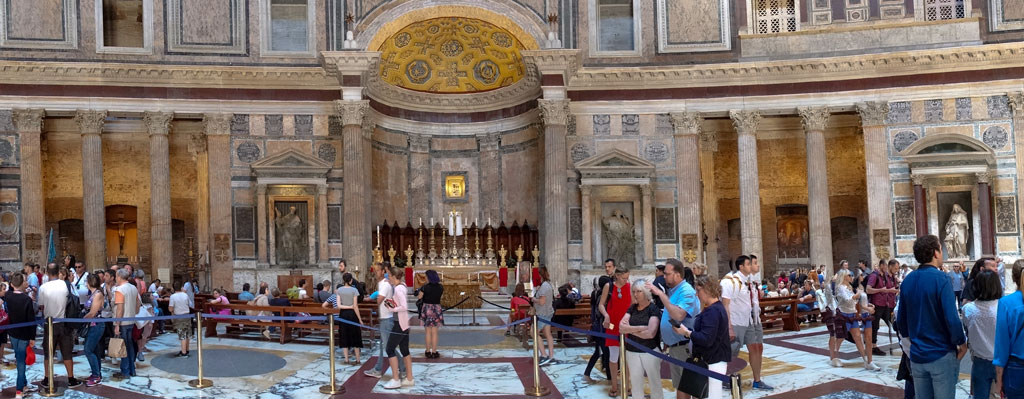TODAY’S TOURING
We started our day touring a couple of our favorite sites in Rome: Piazza Navona and the Pantheon. At Piazza Navona we visited Chiesa di Sant’Agnese in Agone. We strolled to the nearby Pantheon and soaked in the atmosphere. The Pantheon is my favorite building in Rome. Then we met my Pellico cousins for a wonderful seafood lunch on the Piazza Navona, eating, talking, catching up, and people watching. It was a special meal of items not on the menu. A very special lunch with special people. After lunch, the group walked to Campo di Fiore and a bit more in central Rome. We walked back to our vacation rental and rested. Another fine day in Rome.
REFERENCES
Piazza Navona (Rick Steves)This long, oblong square is dotted with fountains, busy with outdoor cafés, lined with palazzos and churches, and thronged with happy visitors. Piazza Navona has been a center of Roman life since ancient times. By its shape you might guess that it started out as a racetrack, part of the training grounds built here by Emperor Domitian around A.D. 80. That was the same year the Colosseum opened: Rome was at its peak.
But much of what we see today came in the 1600s, when the whole place got a major renovation. At the time, the popes were trying to put some big scandals behind them, and beautification projects like this were a peace offering to the public.
Chiesa di Sant’Agnese in Agone (Rick Steves)Now, follow the Plata river god’s gaze upward. He’s looking at the Church of Sant’Agnese, which dominates the square. It was the work of Francesco Borromini, Rome’s other great Baroque architect. It has Borromini’s signature motif—concave lines. Notice how the inward-curving facade helps reveal the dome. Borromini’s elaborate facade epitomizes the curved symmetry of the Baroque era. It’s also a fine example of Baroque deception: While the facade is mammoth, the actual church interior is only as wide as the four middle columns at the entrance.
Borromini was once Bernini’s student and became his great rival. But legend says that Bernini got the final word: He designed the river god Plata to look up at Borromini’s church…and tumble backward, in horror. It certainly looks that way and makes a great story—but in fact, the fountain was completed before Borromini even began the church.
The Pantheon (Rick Steves)Perhaps the most magnificent building surviving from ancient Rome is this temple to the “pantheon” (literally, all the gods). It faces a piazza, as it has since ancient times, when this was an arcaded square—an elegant and shaded gathering place with covered walkways. The ancient Romans introduced the piazza culture, and you can see it thrives to this day. In antiquity, the Pantheon was above street level, approached by a staircase (the staircase survives but is buried beneath the square). Notice how the steps of the 18th-century fountain in the center of the square disappear into the modern pavement, and how the square slants down toward the street level of 2,000 years ago. The obelisk rising from the fountain originally decorated a temple to the Egyptian goddess Isis (wife of Osiris). Rome had an important connection to Egypt (from where much of its grain came) and was happy to have a temple here for its Egyptian residents.
The 40-foot, single-piece granite columns of the Pantheon’s entrance show the scale the ancient Romans built on. The columns support a triangular Greek-style roof with an inscription that proclaims, “M. Agrippa built this.” In fact, the present structure was built (fecit) by Emperor Hadrian (A.D. 120), who gave credit to the builder of an earlier temple. This impressive entrance-way gives no clue that the greatest wonder of the building is inside—a domed room that inspired later domes, including Michelangelo’s St. Peter’s and Brunelleschi’s Duomo in Florence.




















What a great looking lunch, with so many relatives!